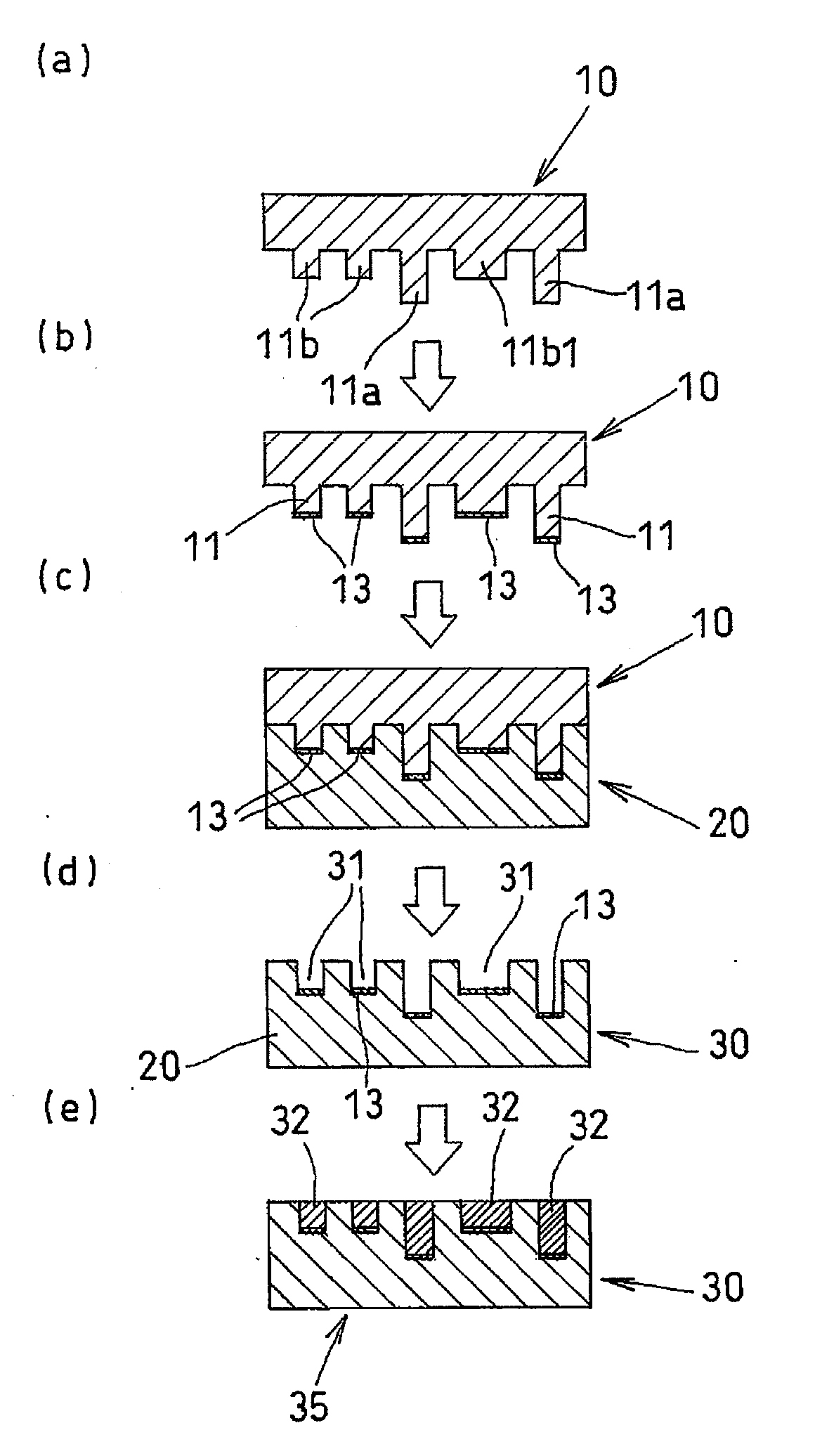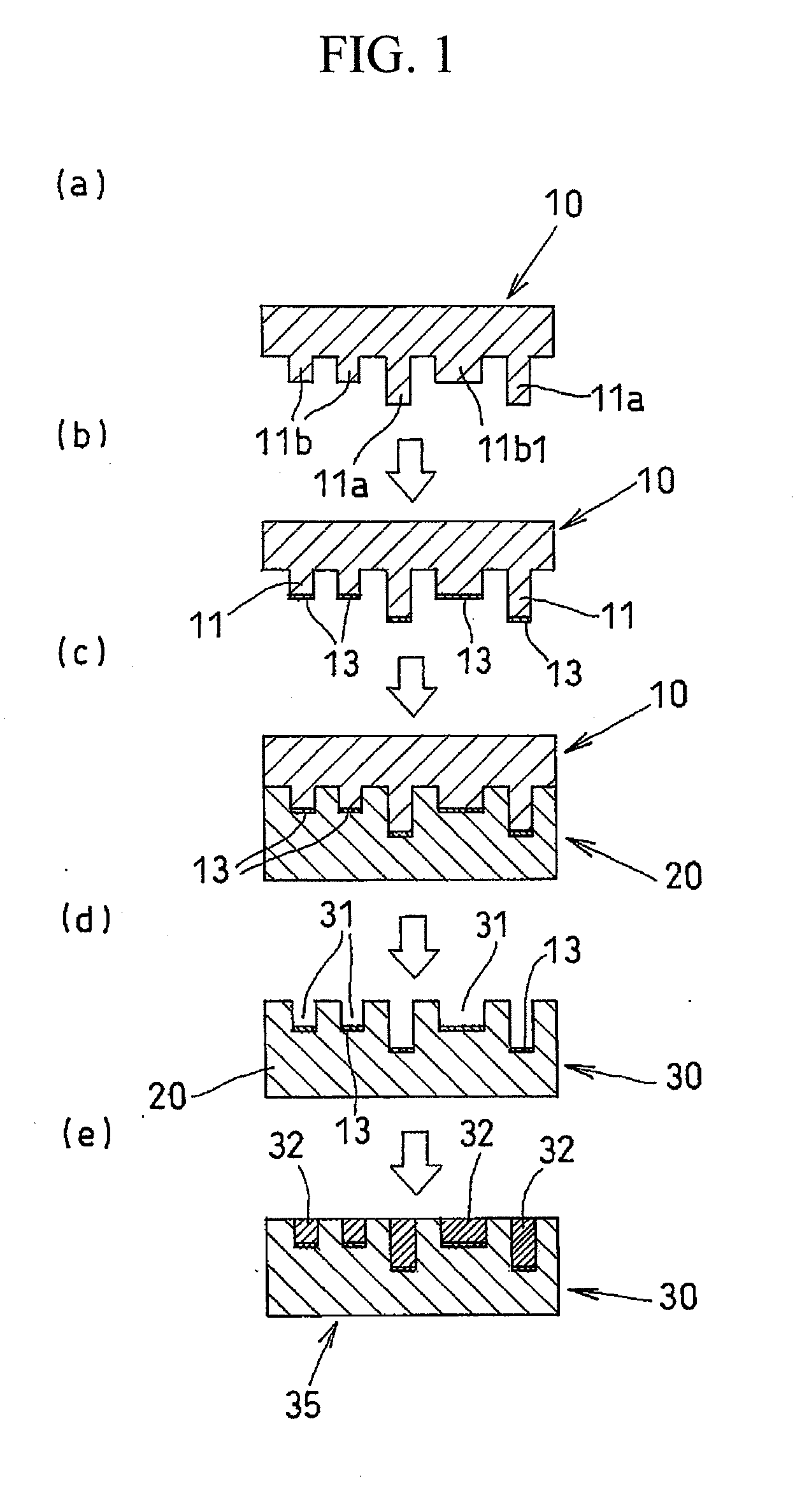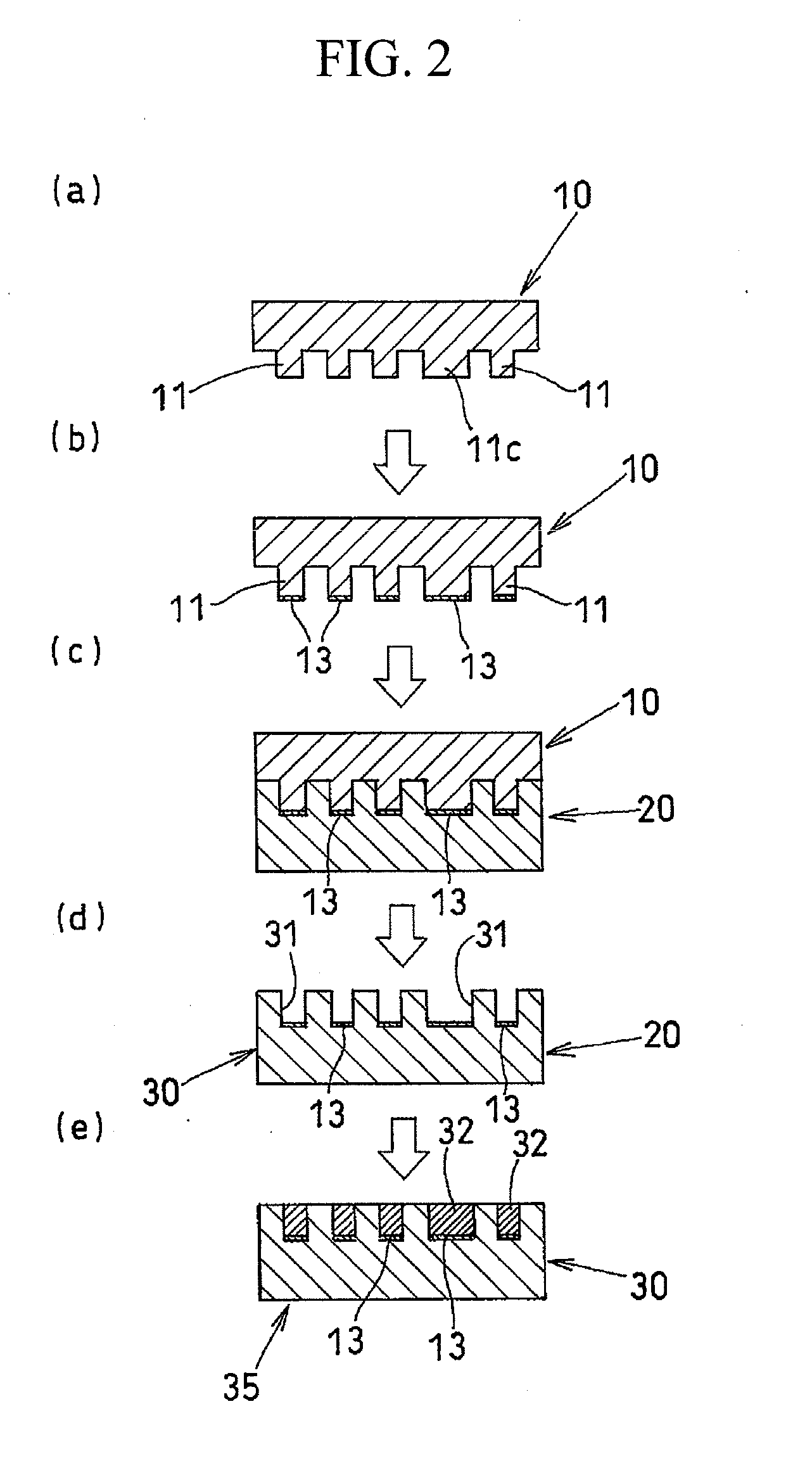Circuit board and method for manufacturing the same
a technology of circuit boards and wires, applied in the direction of superimposed coating process, resistive material coating, liquid/solution decomposition chemical coating, etc., can solve the problem of difficulty in forming microfabricated wirings with a width of approximately 30 m or less, and achieve excellent reliability
- Summary
- Abstract
- Description
- Claims
- Application Information
AI Technical Summary
Benefits of technology
Problems solved by technology
Method used
Image
Examples
embodiment 1
[0025]FIG. 1 shows a first embodiment of the method for manufacturing a circuit board of the present invention in the order of manufacturing steps. In FIG. 1, a numerical reference “10” denotes a mold. Protrusions 11 were formed on the flat face side of a nickel alloy plate having at least one flat face by a conventionally known electrocasting treatment such that they were formed in a pattern corresponding to a circuit pattern to be formed on the surface of a circuit board to be obtained. In the case of a mold 10 shown in FIG. 1a, protrusions 11a and 11b having different heights were formed in a manner such that a protrusion 11b1 has a greater width than the widths of the other protrusions 11b.
[0026]The widths of protrusions 11a and 11b were each determined to be 5 μm. The width of a protrusion 11b1 was determined to be 20 μm. The interval between each of the two protrusions was determined to be 5 μm. The heights of protrusions 11a and 11b were determined to be 15 μm and 5 μm, resp...
embodiment 2
[0032]FIG. 2 shows a second embodiment of the method for manufacturing a circuit board of the present invention in the order of manufacturing steps. Herein, a glass plate having one flat face was used as a material for a mold 10 and a conventionally known sandblasting treatment was performed on the flat face side of the glass plate. Accordingly, protrusions 11 were formed as shown in FIG. 2a. The width and the height of each protrusion 11 were determined to be 5 μm and 10 μm, respectively, except that the width of a protrusion 11c was determined to be 10 μm. In addition, the interval between each of the two protrusions was determined to be 5 μm.
[0033]Next, a silver paste mainly consisting of silver nanoparticles with an average particle size of 20 nm was stretched and applied to a thickness of 2 μm to the surface of a PET plate with the use of a bar coater or the like. The protrusion-11 side of a mold 10 was pressed thereto. Accordingly, as shown in FIG. 2b, a mold 10 was obtained, ...
embodiment 3
[0037]Protrusions each having a width of 50 μm and a height of 50 μm were formed with the use of a quartz plate having one flat face (not shown) as a material for a mold 10 in the same manner as in Embodiment 2. The interval between each of the two protrusions was determined to be 10 μm.
[0038]Next, a silver paste mainly consisting of silver nanoparticles with an average particle size of 5 nm was stretched and applied to a thickness of 5 μm to the surface of a PET plate with the use of a bar coater or the like. The protrusion-11 side of the mold 10 was pressed thereto. Accordingly, a mold 10 was obtained, such mold having the protrusions 11 with head portions to which the silver paste 13 had been applied.
[0039]A polycarbonate resin film with a thickness of 80 μm was placed on a glass plate. Then, the protrusion-11 side of the mold 10 was pressed thereto, followed by heat treatment in vacuo at 170° C. for 10 minutes.
[0040]The mold 10 was removed from the glass plate at ordinary temper...
PUM
| Property | Measurement | Unit |
|---|---|---|
| width | aaaaa | aaaaa |
| thickness | aaaaa | aaaaa |
| aspect ratios | aaaaa | aaaaa |
Abstract
Description
Claims
Application Information
 Login to View More
Login to View More - R&D
- Intellectual Property
- Life Sciences
- Materials
- Tech Scout
- Unparalleled Data Quality
- Higher Quality Content
- 60% Fewer Hallucinations
Browse by: Latest US Patents, China's latest patents, Technical Efficacy Thesaurus, Application Domain, Technology Topic, Popular Technical Reports.
© 2025 PatSnap. All rights reserved.Legal|Privacy policy|Modern Slavery Act Transparency Statement|Sitemap|About US| Contact US: help@patsnap.com



